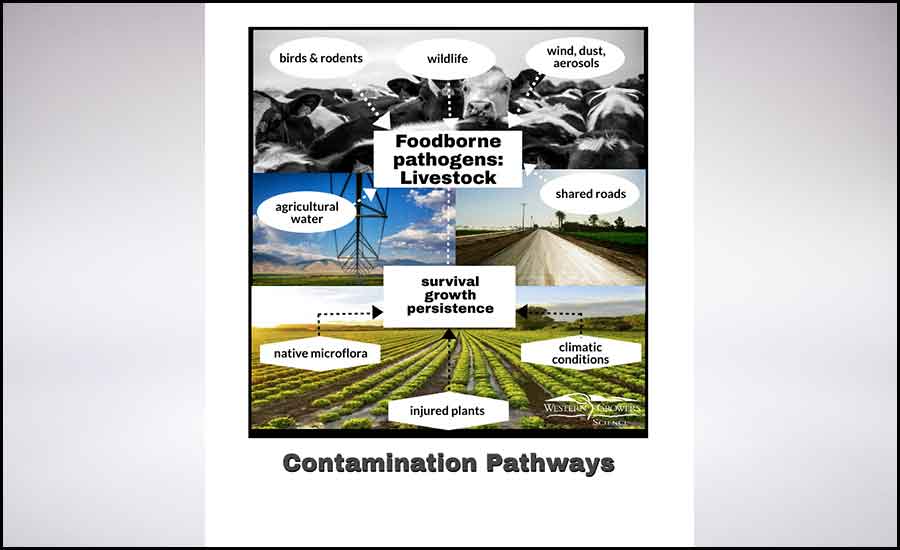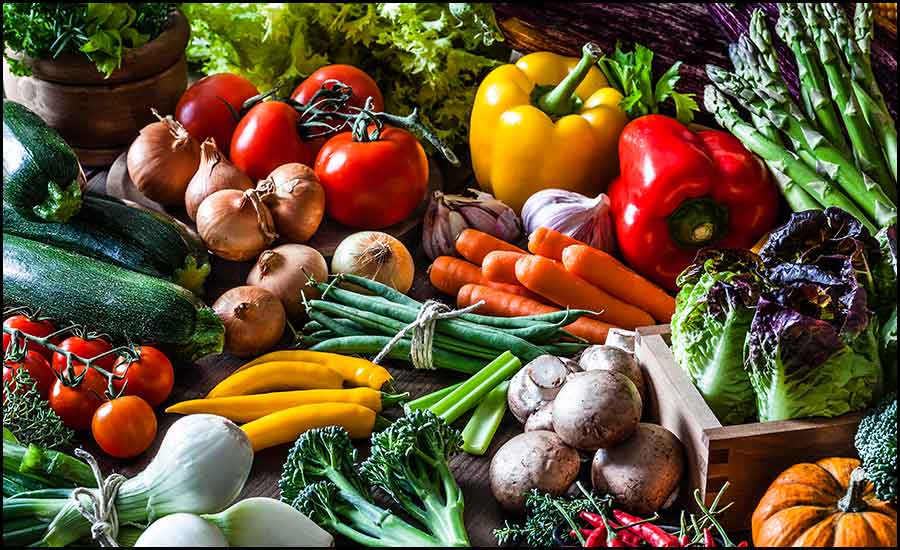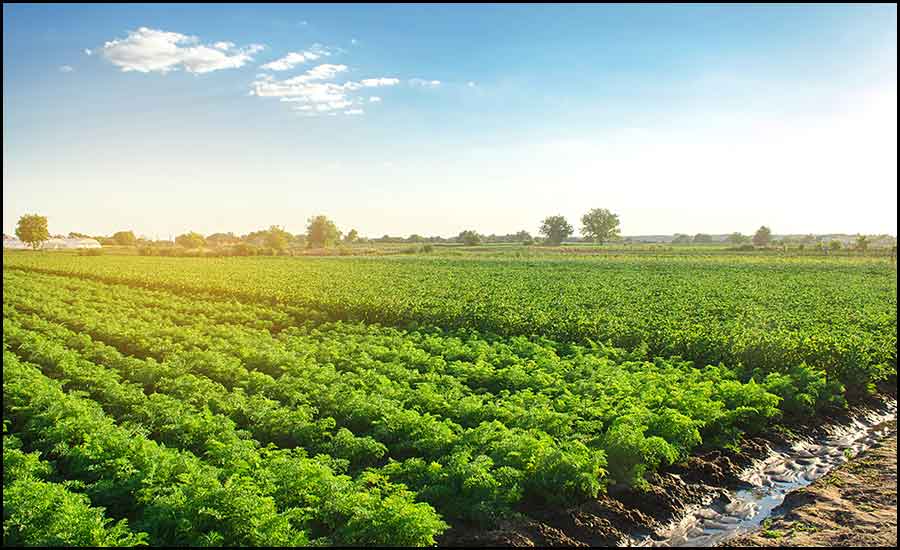Shiga toxin-producing E. coli (STEC) entered the lexicon of foodborne pathogens in the mid-1980s. Initially associated primarily with meat contamination, STEC-contaminated produce products broke onto the food safety scene in 1996 when consumers became sick from drinking unpasteurized Odwalla-brand apple juice. STEC gained further notoriety with the nationwide outbreak linked to fresh spinach consumption in 2006.
The spinach outbreak catalyzed the leafy greens industry to develop food safety best practices for their commodities that later became the foundation for state marketing orders for leafy green handlers and producers in California (CA LGMA) and Arizona (AZ LGMA), respectively. Other commodity groups followed the leafy green industry’s example by establishing their own commodity-specific food safety best practices to prevent contamination by STEC and other foodborne pathogens. But the leafy greens industry continues to be out front in their continuous effort to improve their food safety practices. Led by Western Growers, both the AZ LGMA and CA LGMA routinely evaluate their food safety guidelines to maintain current science- and risk-based best practices.
Currently, in an effort to continue to improve food safety practices, Western Growers is spearheading an industry initiative to support data-driven food safety practices and approaches. This groundbreaking initiative intends to spawn a comprehensive food safety data-sharing tool to 1) provide fresh produce growers the ability to benchmark their food safety efforts and 2) provide insight into food safety practices across the industry as a whole.
The potential impact of this seamless combination of science and data holds a new promise and can play a key role in answering the questions below.
What are the risk factors for STEC contamination of fresh produce?
Although site-specific risk factors leading to STEC contamination in any given produce production area are not fully predictable, the potential sources of STEC are point sources in the environment around fresh produce fields. Since STEC’s primary reservoirs are warm-blooded animals, fresh produce production areas that are adjacent or close to agricultural animal operations or use a water source close to an animal operation elevate the risk of contamination. In addition to domestic animals, wildlife may also serve as potential contamination sources. Aside from direct contamination from wild and domestic animal feces, contamination can be spread via those routes routinely named in good agricultural practices and food safety guidance documents – agricultural water, equipment, soil amendments, and workers – all of which, if contaminated, can transmit STEC to in-field fresh produce. Other factors that may affect the risk of contamination spreading to crops from adjacent land use include shared roadways, physical barriers separating fields from potential contamination (whether the potential contamination is uphill/upwind or downhill/downwind from the crop), or the potential for chronic or seasonal movement of wildlife and insects between animal operations and crop production.
 Since STEC’s primary reservoirs are warm-blooded animals, fresh produce production areas that are adjacent or close to agricultural animal operations or use a water source close to an animal operation elevate the risk of contamination. Infographic courtesy of Western Growers
Since STEC’s primary reservoirs are warm-blooded animals, fresh produce production areas that are adjacent or close to agricultural animal operations or use a water source close to an animal operation elevate the risk of contamination. Infographic courtesy of Western Growers
In addition to land use, conditions of the plant itself as well as the plant’s environment may enhance or elevate the risk of STEC contamination. Risk from STEC varies depending on the produce commodity’s surface traits (e.g., smooth and waxy vs. rough) and nutritional characteristics (e.g., sugar content). Plant age and whether a plant is diseased or injured also increase the susceptibility to pathogen contamination. Rainfall and subsequent runoff disperse and disseminate STEC, when it is present in the environment, from point or nonpoint sources into the surrounding production environment. Harvesting while it is raining or following heavy rainfall may increase the amount of soil on equipment and roads, workers’ tools and clothing, and on the harvested product, which subsequently increases the contamination risk. Other suspected weather-related risk factors include intense wind or heat, frost damage, or warm weather followed by rain close to the time of harvest.
In conclusion, there is complexity in the environment and several risk factors growers manage and continue to mitigate.
 Risk from STEC varies depending on whether the produce commodity’s surface traits are smooth and waxy or rough, and on their internal nutritional characteristics, like sugar content. Image courtesy of [fcafotodigital]/[Collection E+] via Getty Images
Risk from STEC varies depending on whether the produce commodity’s surface traits are smooth and waxy or rough, and on their internal nutritional characteristics, like sugar content. Image courtesy of [fcafotodigital]/[Collection E+] via Getty Images How can we prevent STEC contamination?
1) Separation
Separation may take the form of physical distance or barriers. For the grower, this may seem like a daunting, at times nearly impossible, task in an outdoor, uncontained production environment. But we know where STEC comes from, and limiting potential sources of STEC contamination can minimize the risk of contamination – even in outdoor settings. Take for example reservoir water used for irrigation; it can be physically distanced from a STEC point source (e.g., a cattle feedlot) or have a fence and a berm surrounding it to limit wildlife and runoff access.
2) Monitoring
Eyes open and feet on the ground are two practical activities that are essential to preventing STEC contamination. There is no substitute for vigilance in the form of routine monitoring for visible and invisible (e.g., testing the microbial quality) evidence of potential STEC contamination. The danger with routine monitoring is exactly that – it is routine, and it can easily become an activity void of alertness and conducted on autopilot. Monitoring is more than just checking the box on a log sheet or computer program. So much of food safety is being aware of and observing what is going on; awareness for the out-of-place, the “something doesn’t look right” intuition, and why-is-that-observation. It goes to the heart of what the produce industry refers to as a company’s “food safety culture.”
3) Sanitation
Sanitation is an essential element of reducing STEC contamination risk both in growing and packing operations. If it comes in contact with produce crops (e.g., poor microbial quality irrigation water, food contact surfaces/zone 1, etc.), then it must be cleaned and/or sanitized. Biofilm formation and sanitation of outdoor harvesting equipment pose the greatest challenges to preventing contamination with both of these issues receiving greater scrutiny in recent STEC contamination events.
 Just as fresh produce cannot be completely isolated from nature in an outdoor growing environment, produce growers cannot function in isolation from what's going on upwind and adjacent to in-field crops, like these carrots. Image courtesy of [Andrii Yalanskyi]/[Collection iStock/Getty Images Plus] via Getty Images
Just as fresh produce cannot be completely isolated from nature in an outdoor growing environment, produce growers cannot function in isolation from what's going on upwind and adjacent to in-field crops, like these carrots. Image courtesy of [Andrii Yalanskyi]/[Collection iStock/Getty Images Plus] via Getty Images 4) Communication
As mentioned above, “a culture of food safety” has been a repetitive and dominant point in educational efforts for the past decade within the produce industry. The essence of this culture is that food safety needs to be embedded in a company’s psyche. Maintaining a robust food safety culture starts with open and active lines of communication – both within a company as well as with those around it (i.e., neighbors, the produce industry-at-large, and the regulatory community).
Just as fresh produce cannot be completely isolated from nature in an outdoor growing environment, produce growers cannot function in isolation from what is going on upstream/upwind and adjacent to in-field crops. Co-existence is required to prevent STEC contamination and maintain open lines of communication among agricultural neighbors. Much of this effort involves the coordination of shared roads, waterways, and other resources. To find solutions to reduce the risk of STEC contamination all agricultural neighbors need to work together to ensure their respective activities are not posing food safety risks on in-field crops.
5) Data Analysis
We live in a world increasingly shaped by data and preventing STEC contamination is no exception. With over a decade of food safety data collection, both individual businesses and the overall industry have accumulated enough data to incorporate trends and, in some cases, predictive analyses into their efforts to prevent STEC contamination.
Produce safety needs in the 21st century require new approaches. Thus, Western Growers is leading a food safety data-sharing initiative that will play an integral role in shaping a new “data-driven” culture. But in the meantime, the fresh produce industry remains vigilant in its use of preventive practices, good neighbor policies, innovation and technology to mitigate the risk posed by STEC contamination while it supplies the world with fresh and nutritious food.




